RTX 5090s get ready to blow with AI-focused makeovers in China — industrial production lines transplant GPU and memory from gaming cards onto server-ready PCBs with blower-style coolers
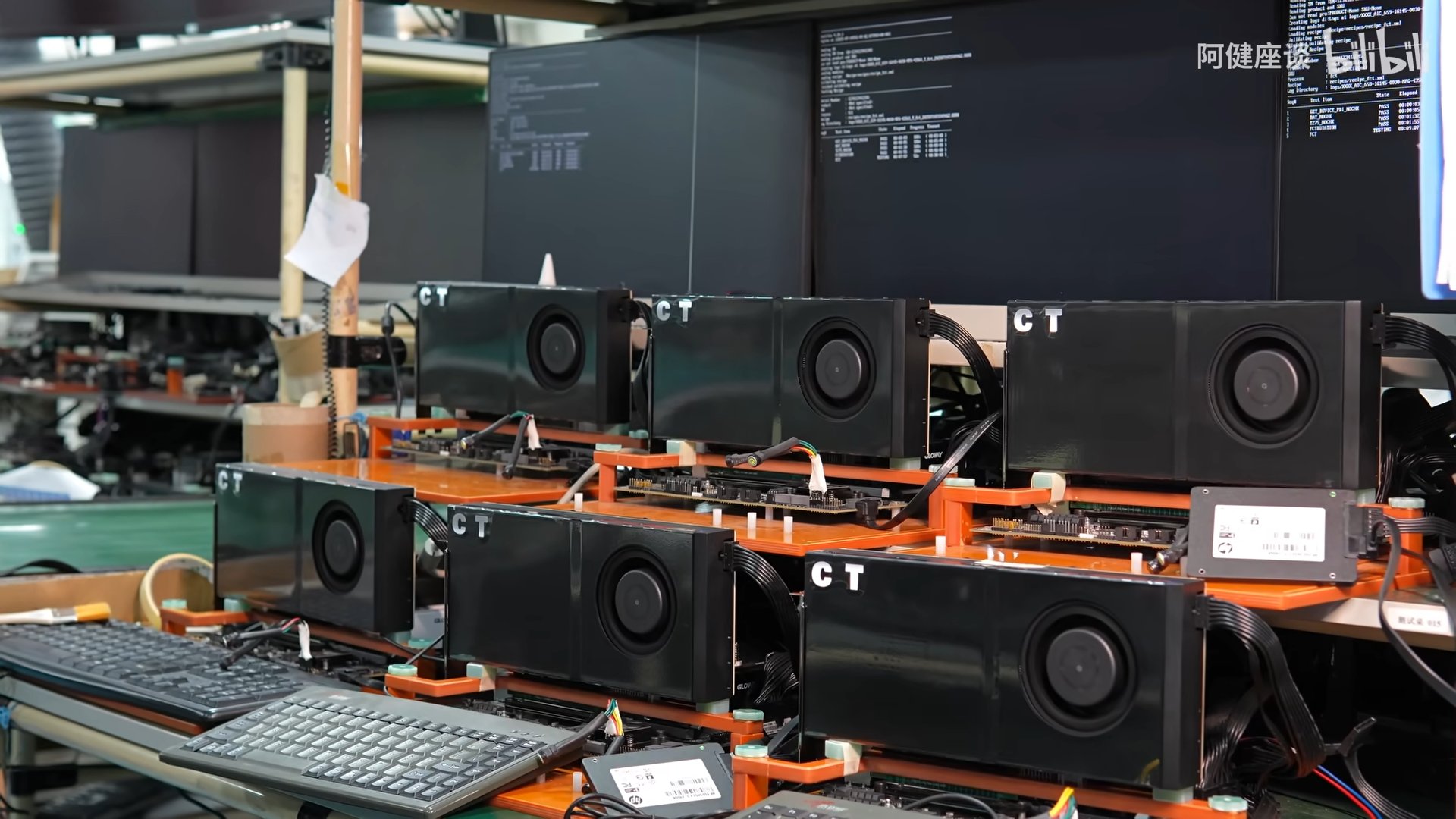
The RTX 5090 is supposed to be the crown jewel of gaming GPUs—a 600W monster designed for enthusiasts. But in China, a very different story is unfolding. A recent video from Bilibili creator Ajian Talk exposes a parallel production line where these consumer cards are stripped bare, rebuilt, and reborn as blower-style “Turbo” models for AI servers. We've seen AI-focused 5090s surfacing from China before, but this is a rare look into the actual process of how they're made.
What’s striking is the scale at which this work is done, as Ajian’s footage shows stacks of retail RTX 5090 boxes, complete with packaging and protective films, sitting in storage. These cards are tightly controlled and only available as 'D' variants due to U.S. export restrictions, yet somehow a Shenzhen-based company called "CT" has stockpiles large enough to fuel entire assembly lines. These are standard gaming variants from the likes of Zotac, Palit, and Inno3D, too.
The process starts with full retail 5090s undergoing functional tests; workers check the GPU die and memory to ensure they're stable. Any defective boards are discarded before a single screw is turned. For the rest, CT tears off the triple-fan coolers and preps the “full-blood” GB202 chips for transplant. In the video, the host says that contrary to online rumors, blower cards aren’t made with downgraded silicon—only the best binned, high-performing dies are selected for this conversion. There are some "bad" dies on gaming 5090s that are completely discarded.
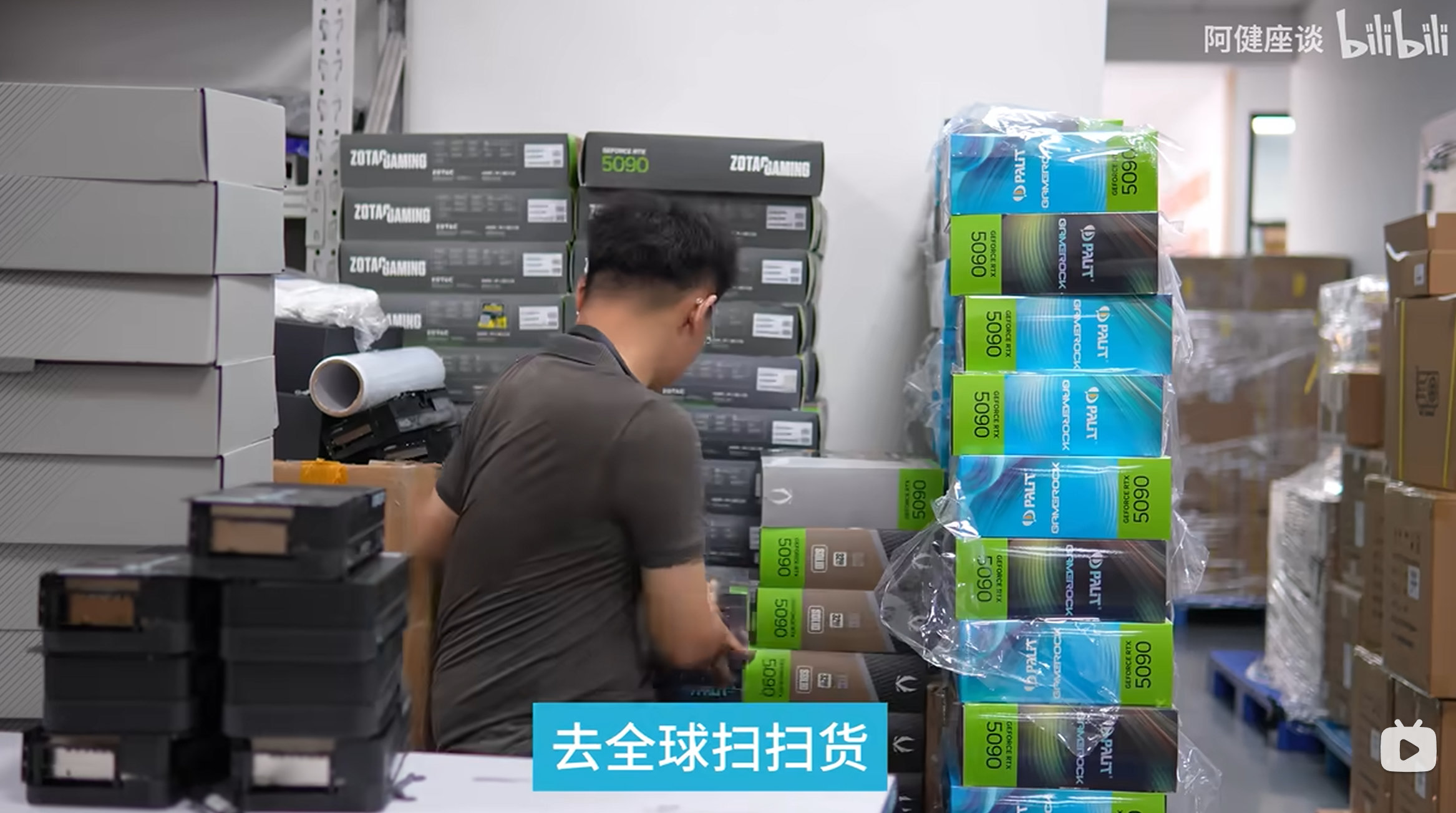
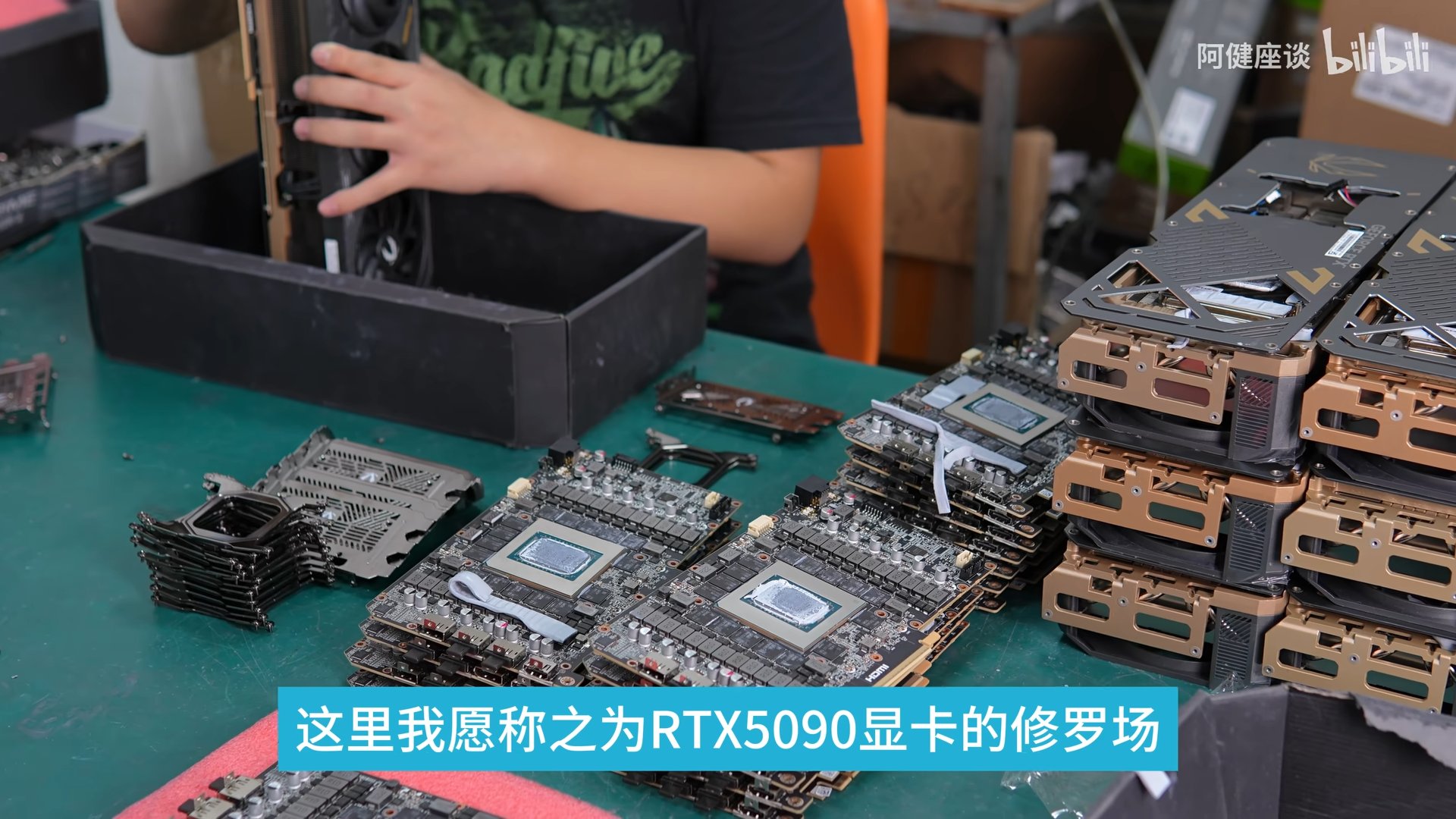
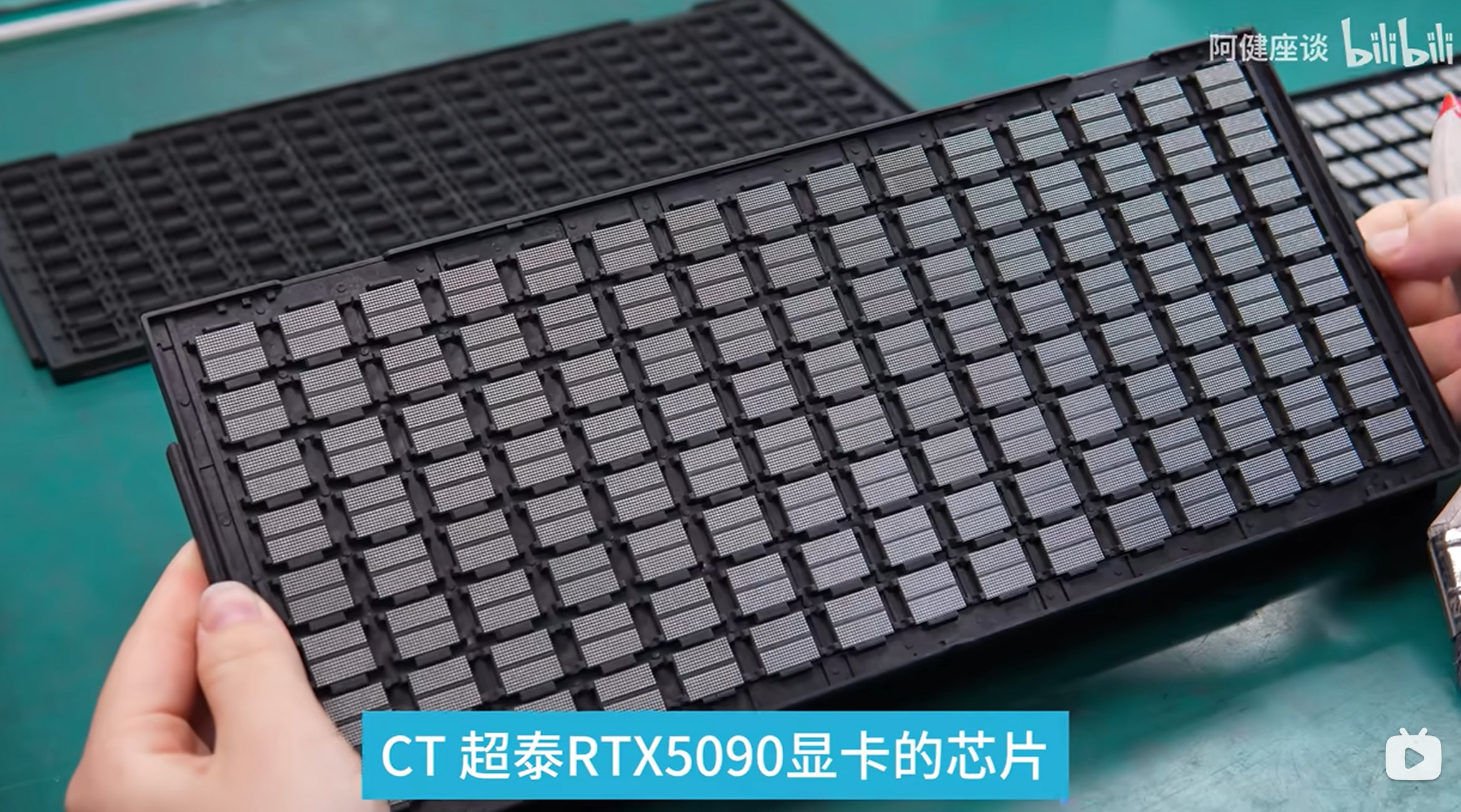
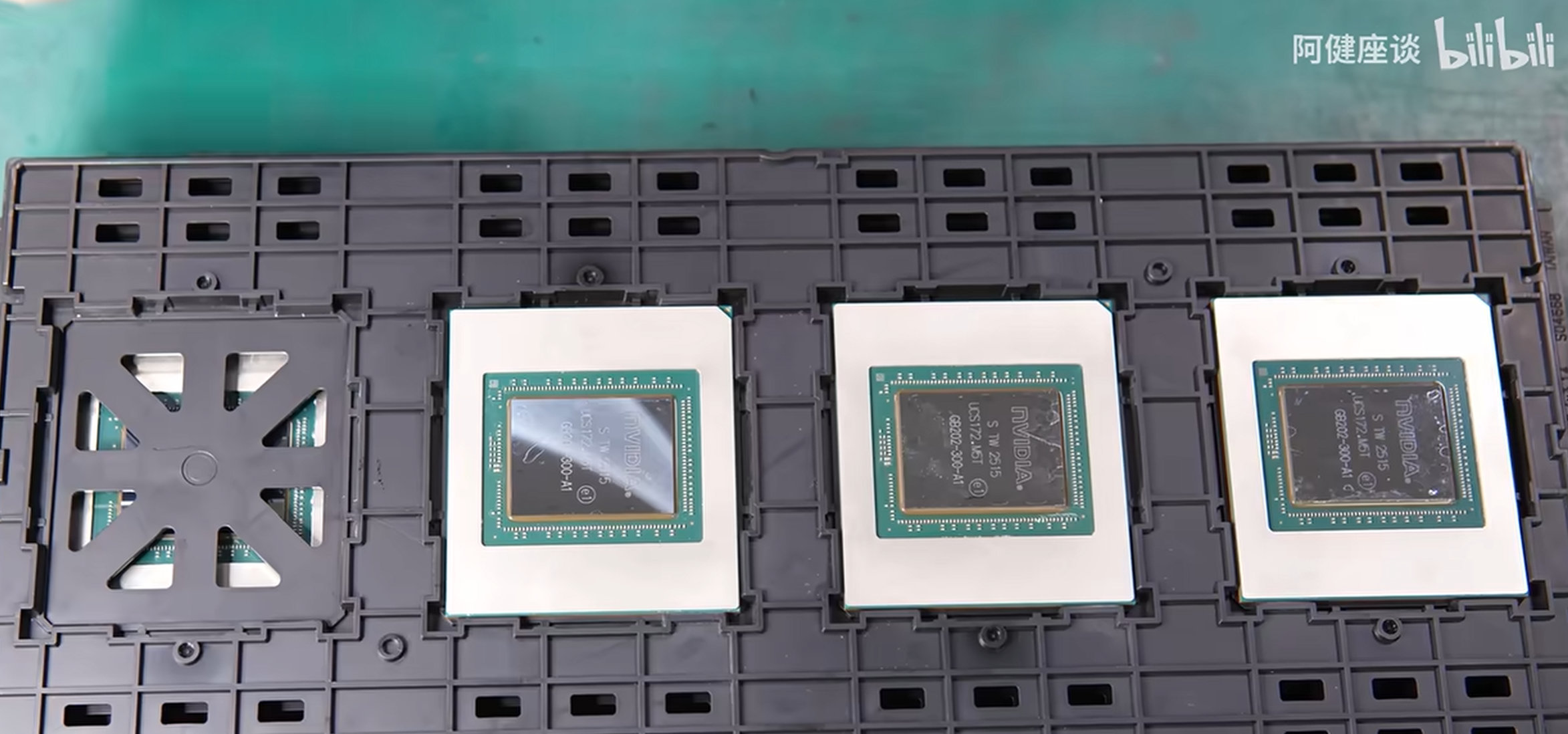
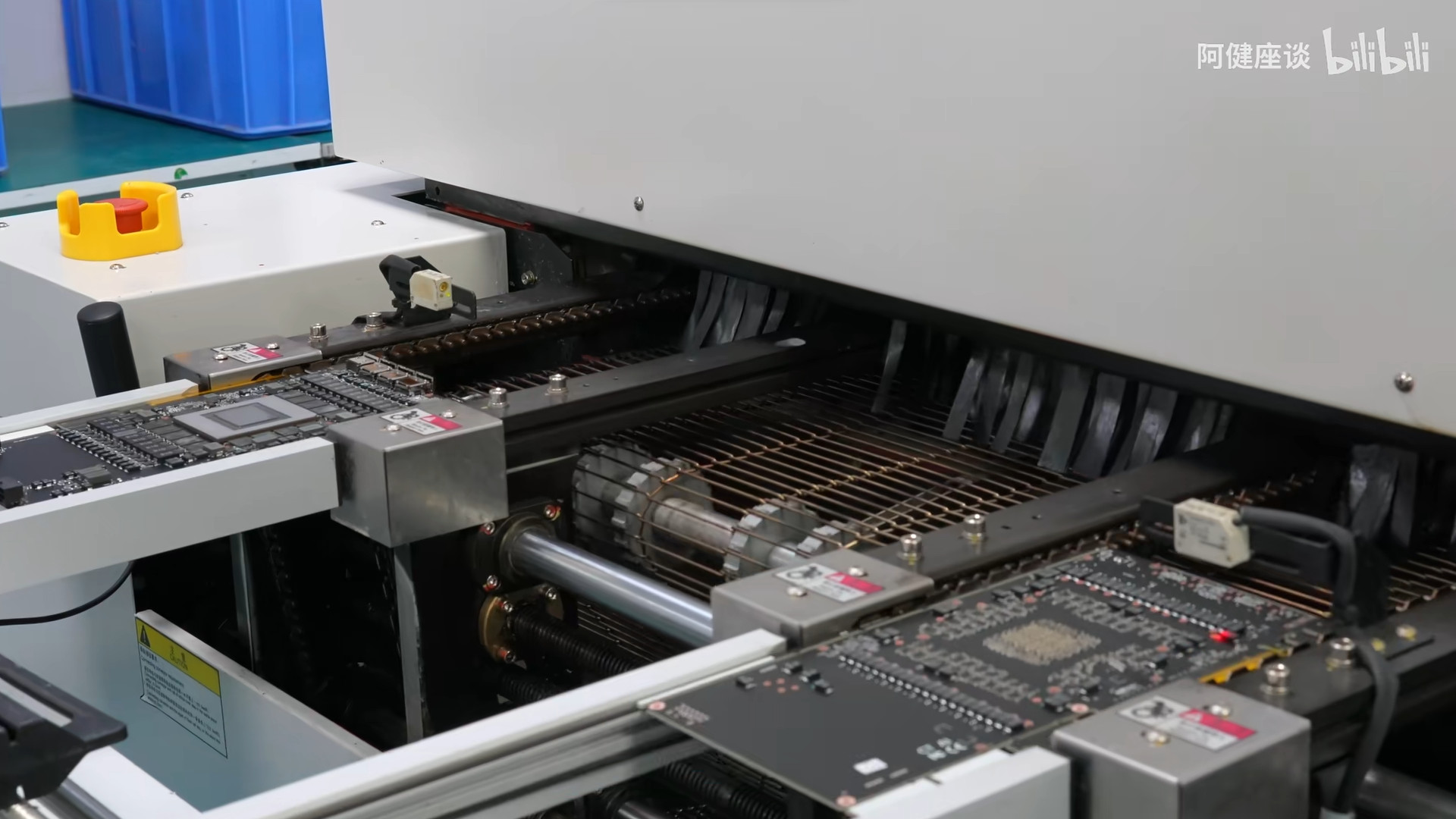
Once the testing and teardown process is complete, it's time to do the actual work. The conversion is mostly straightforward, but it's not just manual tinkering. Ajian’s video reveals industrial-grade BGA rework stations lifting the GPU dies and VRAM modules, cleaning them, and reballing them for mounting on custom dual-slot PCBs designed specifically for blower cooling. Every component—from capacitors to power connectors—is placed with 15-micron precision by SMT machines, while nitrogen-fed reflow ovens solder everything under controlled conditions to avoid oxidation.
After reassembly, the cards are fitted with blower coolers, metal backplates, and server-grade I/O shields. The RTX 5090 Turbo is born. Each card undergoes 24-hour burn-in tests and repeated power cycles, ensuring it can survive the brutal demands of AI workloads. GPUs with blower-style coolers work well when stacked densely, as they help the hot air escape out the back instead of circulating it, like in a normal case with an axial cooler.
Blower GPUs like the 5090 Turbo are thinner (just 2 slots) and designed for consistent airflow in rack-mounted systems. Up to eight cards can fit into a single chassis, making them ideal for AI training clusters. CT’s models reportedly use higher-grade components, better PCB design, and improved gold plating on PCIe contacts, all to guarantee stability at 600W power levels.
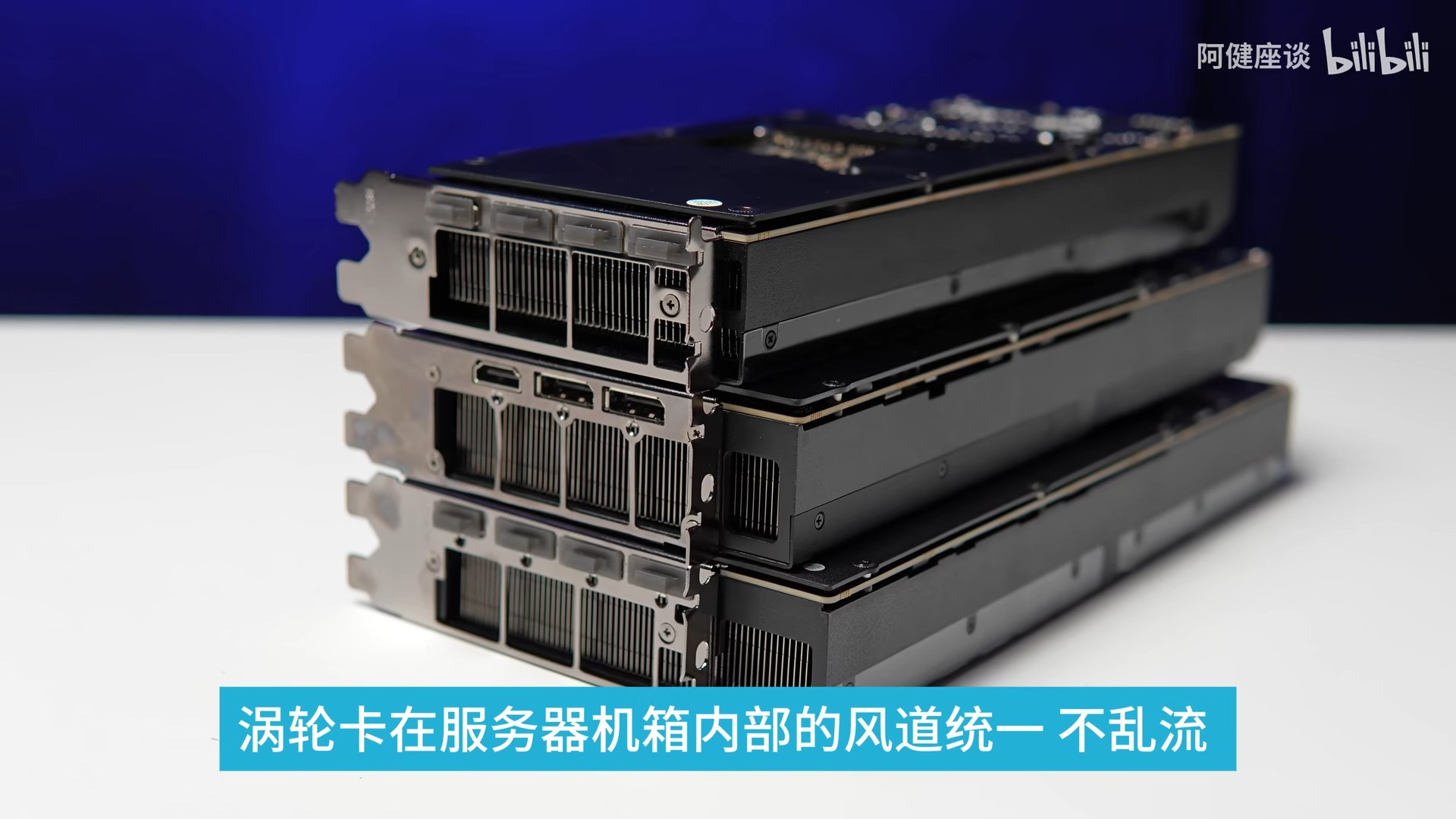
The video also highlights a deeper issue: consumer GPUs are being funneled into AI markets, echoing the shortages seen during the crypto mining boom. For gamers already struggling to buy a 5090 at retail prices, these conversions might feel like history repeating itself.
Get Tom's Hardware's best news and in-depth reviews, straight to your inbox.
Still, the efficiency of CT’s operation is remarkable and a glimpse at how quickly consumer hardware can be repurposed for enterprise needs. Whether NVIDIA condones this or turns a blind eye is another story, we've not seen the company pursue any investigation into these illicit operations before.
In the end, the RTX 5090 Turbo becomes more than a simple shroud swap—it’s a reflection of how the GPU market is shifting under the weight of AI demand. Originally looked at as a symbol of gaming excess, the 5090 has now been reshaped for data centers, blurring the boundary between consumer tech and industrial hardware.
Follow Tom's Hardware on Google News to get our up-to-date news, analysis, and reviews in your feeds. Make sure to click the Follow button.

Hassam Nasir is a die-hard hardware enthusiast with years of experience as a tech editor and writer, focusing on detailed CPU comparisons and general hardware news. When he’s not working, you’ll find him bending tubes for his ever-evolving custom water-loop gaming rig or benchmarking the latest CPUs and GPUs just for fun.
-
abufrejoval Perhaps they can swap out those GDDR chips with the bigger variants while it at?Reply
Or also add a 2nd set of chips via a clamshell conversion? -
magbarn This is exactly why the only available 5090's are at up to 50% markups. The AIBs are fully complicit in somehow getting them into China to be repurposed for Ai. Still don't understand why Nvidia just doesn't triple 5090FE production and cut the allocation to these scummy AIBs.Reply -
tamalero Reply
They definitively do that.abufrejoval said:Perhaps they can swap out those GDDR chips with the bigger variants while it at?
Or also add a 2nd set of chips via a clamshell conversion?
Linus Tech Tips got a 4090 modified with 48GB and custom PCB and BIOS for AI testing. -
abufrejoval Reply
Not quite the price I was thinking of, though.tamalero said:They definitively do that.
Linus Tech Tips got a 4090 modified with 48GB and custom PCB and BIOS for AI testing.
RTX 5090 with 32GB is €2229 at Geizhals, including taxes and continues to get cheaper. That's getting close to half price of one of these modified 4090s.